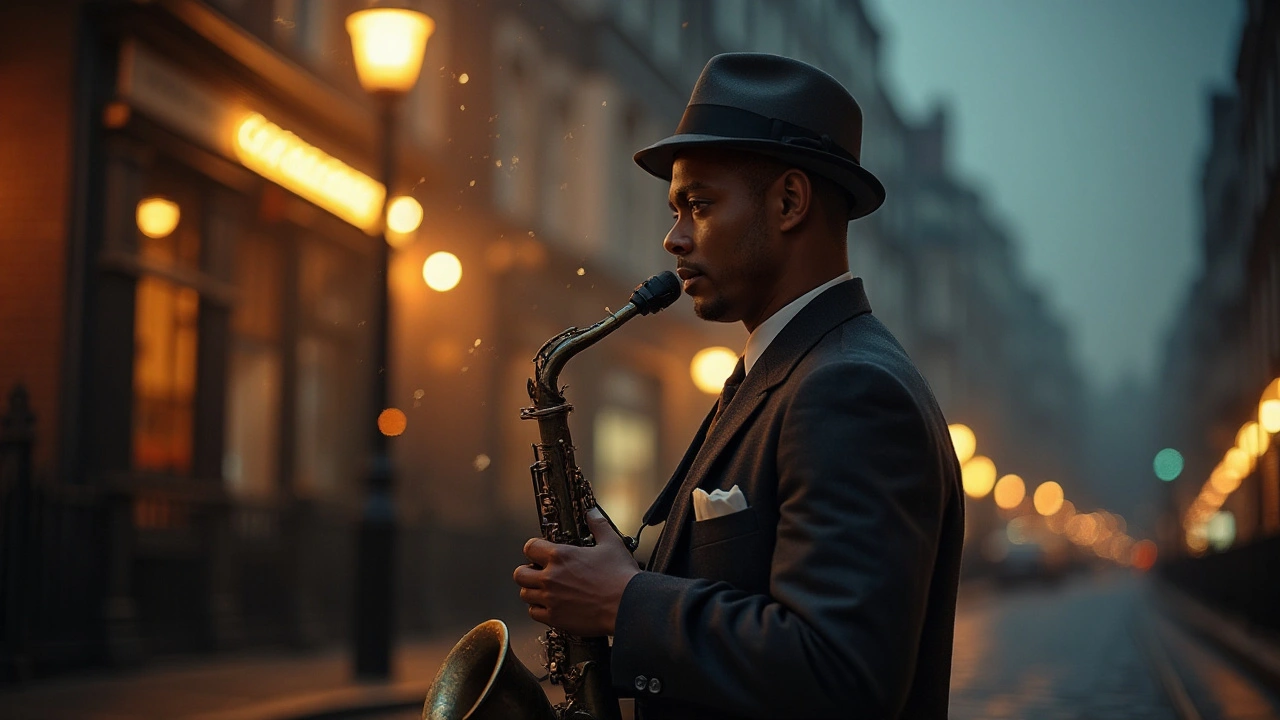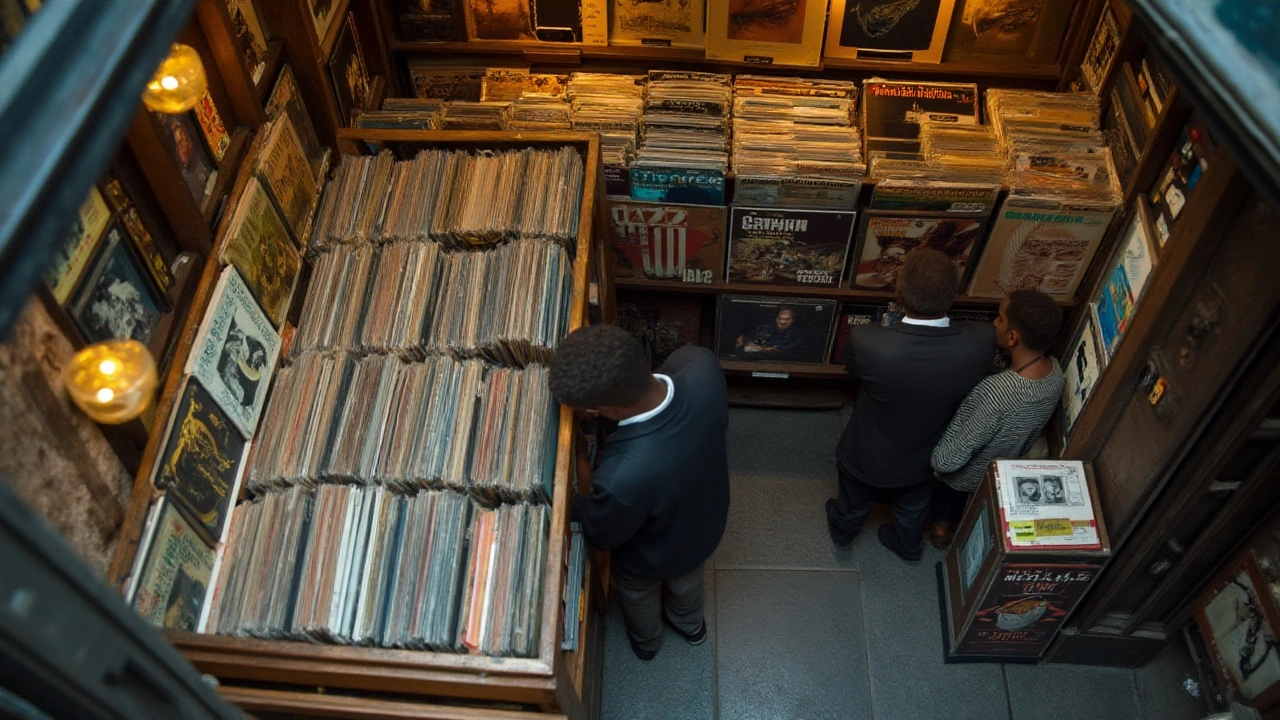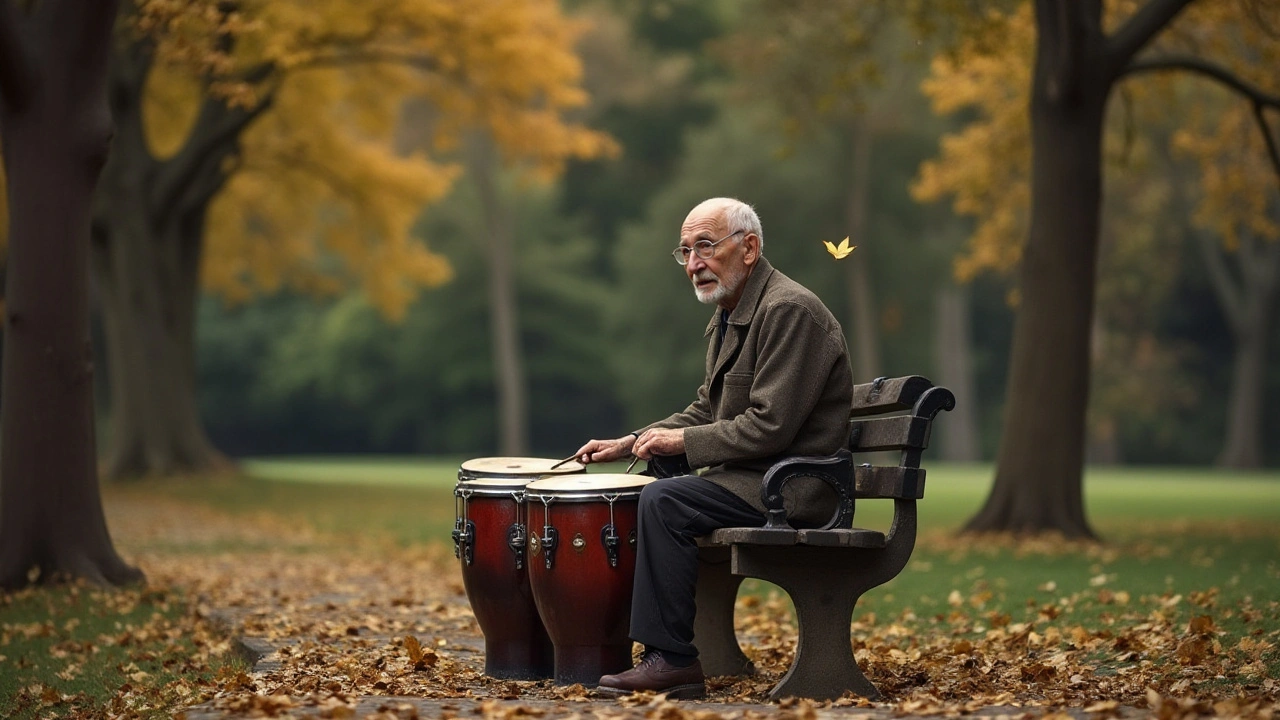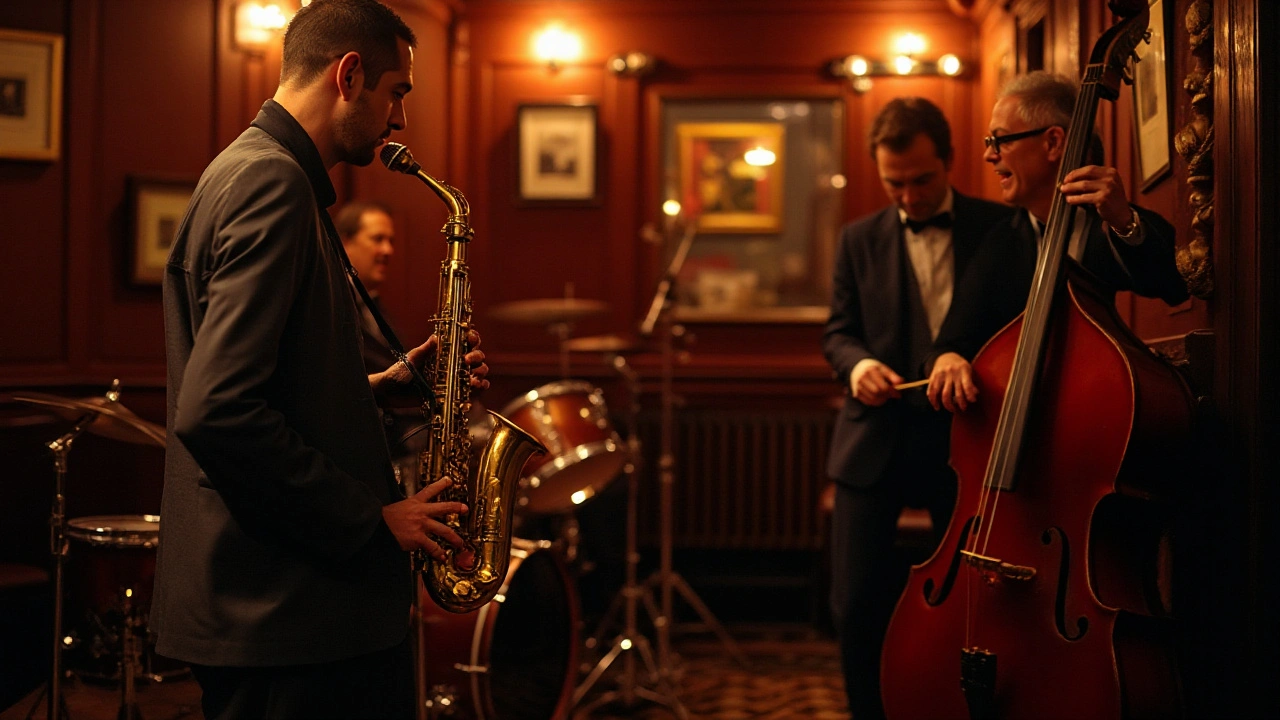Jazz, a genre that has swept across cultures and decades, is a fusion of creativity and collaboration. At its heart lie the instruments that lend their voices and nuances, making each jazz performance a unique experience. From the emotive notes of a trumpet solo to the complex rhythms of a drum set, the tapestry of sound in jazz offers something for everyone.
To truly appreciate jazz, one must delve into the world of its instruments. Each tool of sound, like a character in a play, serves a distinct purpose in shaping the composition. Some instruments sing, others speak, and together they converse in a musical language all their own. As we dive into this exploration, one can't help but be amazed at how these instruments have brought the spirit of jazz to life throughout history.
- The Influence of the Saxophone
- The Soulful Sound of the Piano
- Percussion and Rhythmic Elements
- The Role of Brass Instruments
The Influence of the Saxophone
The saxophone, often synonymous with the mesmerizing sound of jazz, boasts a rich history and enormous impact on the music genre. Invented in the early 1840s by Belgian inventor Adolphe Sax, this woodwind instrument was intended to bridge the gap between the brass and woodwind sections of military bands. Little did Sax know, his creation would become one of the most iconic symbols of jazz. The saxophone's lush tone and dynamic range make it ideal for expressing the intricate emotions embedded in jazz music, allowing musicians to convey soaring soulful melodies as well as more frenetic, energetic phrases. Its versatility and unique voice set it apart, making it a favorite amongst jazz musicians and audiences alike.
By the 1920s, the saxophone had firmly established itself in the jazz scene. This period, known as the Jazz Age, saw the emergence of legendary musicians such as Coleman Hawkins, who was recognized as one of the first prominent tenor saxophonists. Hawkins demonstrated the saxophone's broad expressive capabilities, proving that it could carry complex solos woven with depth and emotion. Another saxophone trailblazer, Charlie Parker, often known as "Bird," played a crucial role in the development of bebop, a style of jazz characterized by fast tempos and improvisational dexterity. Parker's innovative approach to playing reshaped the jazz landscape, and his contributions solidified the saxophone's status as an essential instrument within the genre.
As time went on, the saxophone continued to evolve and diversify its role in jazz. John Coltrane took the instrument to new heights in the 1950s and 60s, pushing the boundaries of jazz music through techniques such as improvisation and extended saxophone solos. Coltrane famously said,
"My music is the spiritual expression of what I am—my faith, my knowledge, my being."This self-expression was evident in his performances, where the saxophone served as an extension of his own voice, allowing him to explore new harmonies and emotional depth that resonated deeply with listeners.
The jazz saxophone has also transcended traditional jazz boundaries. Artists like Sonny Rollins and Stan Getz brought the instrument into bossa nova and fusion jazz, each pushing creative limits and exploring new sonic territories. Their work highlights the saxophone's ability to adapt to various subgenres and styles, maintaining its fundamental role in jazz's ever-evolving narrative. This adaptability keeps it at the forefront of jazz innovation, continually enticing new audiences and inspiring aspiring musicians. From small, smoky clubs to grand concert halls, the saxophone remains pivotal in conveying the heart and soul of jazz to the world. Its influence is far-reaching, and its legacy continues to inspire new generations of jazz musicians.

The Soulful Sound of the Piano
The piano holds a place of reverence in the world of jazz music, often acting as the backbone of bands and ensembles. It has the unique ability to bridge the melody and rhythm sections, weaving intricate harmonies that are both soothing and exhilarating. The sheer versatility of the piano allows it to transcend genres within jazz itself, transitioning seamlessly from smooth ballads to energetic bebop lines. Its keys have been touched by legends like Thelonious Monk and Duke Ellington, with each artist bringing their own flair and creativity to this supreme instrument.
Many have argued that the piano is the cornerstone of jazz innovation. Jazz pianists can derive both harmony and melody, captivating audiences with complex improvisations. The layering of chords and variations in tempo demonstrate the expressive potentials of the piano. Its grand range of dynamics, from whisper-soft tones to powerful fortissimos, provides artists an expansive palette for creativity. The intricate nature of jazz piano has even led some to remark that it tells a story without words—one that listeners can feel deep in their souls.
"The piano ain't got no wrong notes." - Thelonious Monk
One cannot overlook the historical significance of the piano in jazz's development. In the early days of jazz, New Orleans' vibrant scenes saw the piano as central to gatherings in clubs and homes. As jazz migrated and evolved, it brought with it the ragtime syncopations and blues influences manifesting profusely through this instrument. Technological advancements in recording and amplification techniques only expanded its reach, allowing pianists to project their music further and granulate their expression. The post-war period, especially, saw the piano take a more prominent role in smaller combos, helping to thrust the bebop movement into the spotlight.
For musicians and enthusiasts alike, understanding the piano's impact in jazz requires recognizing key techniques such as stride, bop, and modal playing. Jazz pianists master the craft of syncopation, which juxtaposes varying rhythms to create tension and release. Often, the left hand forms the rhythmic foundation while the right dances across the keys in elaborate melodic patterns. This interplay, akin to a musical conversation within the piano itself, is what makes jazz piano playing so engaging and hypnotic.
The piano's role extends beyond solo performance, collaborating wonderfully with other jazz instruments in ensemble settings. Pianos can complement the smoother saxophone lines or contrast the vibrant bursts of trumpets, creating a lush soundscape. Jazz standards often feature piano intros or interludes that have become iconic, such as those in George Gershwin’s “Rhapsody in Blue.” These elements cements the piano as an indispensable force that shapes jazz music's very fabric.

Percussion and Rhythmic Elements
When one thinks of jazz music, it's impossible to ignore the powerful and dynamic influence of percussion. This element is like the heartbeat of jazz, setting the tempo, driving the momentum, and often guiding the other musicians through the ebbs and flows of a piece. From the humble beginnings of jazz on the streets of New Orleans, drums and other percussion instruments have been crucial in weaving the intricate rhythmic patterns that define the genre. At the forefront is the drum set, which jazz musicians have evolved into a versatile instrument capable of producing a wide range of sounds and moods. The drum kit typically includes a bass drum, snare drum, tom-toms, and cymbals, each contributing a unique texture to the music.
Within jazz ensembles, drummers employ numerous techniques to create rhythm and variation. The use of brushes on the snare drum, for example, gives jazz its characteristic smooth and flowing feel. This technique was popularized in the early part of the 20th century and remains a staple in jazz drumming. The cymbals, especially the ride cymbal, play a critical role in defining the swing feel that is so essential to many jazz styles. By providing a steady rhythm combined with subtle accents, the cymbals help keep the pace and drive of the music alive. A key figure in the development of jazz drumming was Art Blakey, whose aggressive style and dynamic solos took the art to new heights.
Another essential component of rhythm in jazz is the use of Latin percussion instruments such as the congas, bongos, and timbales. These instruments bring a different cultural flair and groove to the music. The incorporation of Latin rhythms into jazz gave rise to the subgenre of Latin jazz, which gained prominence in the mid-20th century. Musicians like Tito Puente and Dizzy Gillespie played pivotal roles in this fusion, bringing explosive energy and intricate polyrhythms to the jazz scene. This blending of cultures and sounds has had a lasting impact not only on jazz but also on modern music around the globe. An interesting fact is that the use of Latin percussion stemmed from an increasing collaborative scene in New York, where musicians from different backgrounds came together, sparking creativity and innovation.
Rhythmic complexity in jazz is also achieved through various time signatures and syncopation. Jazz musicians often experiment with unconventional beats, creating layers of unpredictable rhythms that challenge and excite both the listener and the performer. This creativity in timekeeping can be heard across many jazz subgenres, showcasing the skill and innovation that drummers bring to a performance. Furthermore, jazz offers musicians the freedom to improvise, leading to spontaneous bursts of rhythm that can transform a piece into a living, breathing work of art.
Understanding the role of percussion and rhythm in jazz provides insight into the structure and flow of this deeply expressive genre. Jazz drummers do not merely keep time; they actively interact with the ensemble, contributing to the dialogue between instruments and offering surprises at every turn. This interactive nature of jazz is perhaps best summed up by Miles Davis, who famously said,
"When you’re creating your own shit, man, even the sky ain’t the limit."It's this innovative spirit that keeps jazz alive and ever-evolving, guided by the beats that continue to inspire new generations of musicians and listeners alike.

The Role of Brass Instruments
Brass instruments are like the fiery heart of jazz, bringing a vibrancy and intensity that is simply unmatched. At its forefront often stands the trumpet, a staple in jazz bands since the days of Louis Armstrong. Its sharp, bright tones can cut through the ensemble like a knife or softly croon a melodic line in a bluesy jazz ballad. The trumpet is celebrated for its versatility; whether leading a New Orleans street parade or delivering a riveting solo on a smoky stage, it remains iconic.
Another key player in the brass family is the trombone. Known for its unique sliding mechanism, the trombone produces a range of sounds from smooth, lyrical melodies to robust, brassy blasts. In jazz, it's often used to add depth and texture to harmonies, complementing the high notes of the trumpet and the richness of the saxophone. The rich history of its use in jazz goes back to the early 20th century, with figures like Kid Ory and J.J. Johnson paving the way for future generations. Jazz musicians often say that trombones sing their stories, their slides telling tales of joy, sorrow, and everything in between.
The **jazz music** would be incomplete without the tuba, which provides the foundational bass lines that support the entire band. Though not as common in smaller ensembles, the tuba makes a spectacular appearance in larger swing bands and New Orleans-style brass bands. Its deep, booming voice sets a rhythmic foundation essential for jazz's characteristic groove. In a fascinating tidbit, research themed on wind instruments shows that a single brass performer in a jazz band can sometimes emulate the impact of a whole section through skillful use of their embouchure and breathing.
In recent times, brass instruments have become synonymous with experimentation in the jazz genre. Modern artists have been integrating electronic effects and avant-garde techniques into their brass performances, pushing boundaries and expanding the soundscape. Such innovation ensures that jazz stays relevant, continually evolving with the times. As famed trumpeter Wynton Marsalis aptly said,
"The sound of the trumpet is the sound of feasibility. It’s the sound of ‘I can do it.’"This sentiment beautifully captures the essence of brass instruments in jazz; they are not just tools of music but symbols of ambition, expression, and possibility.

